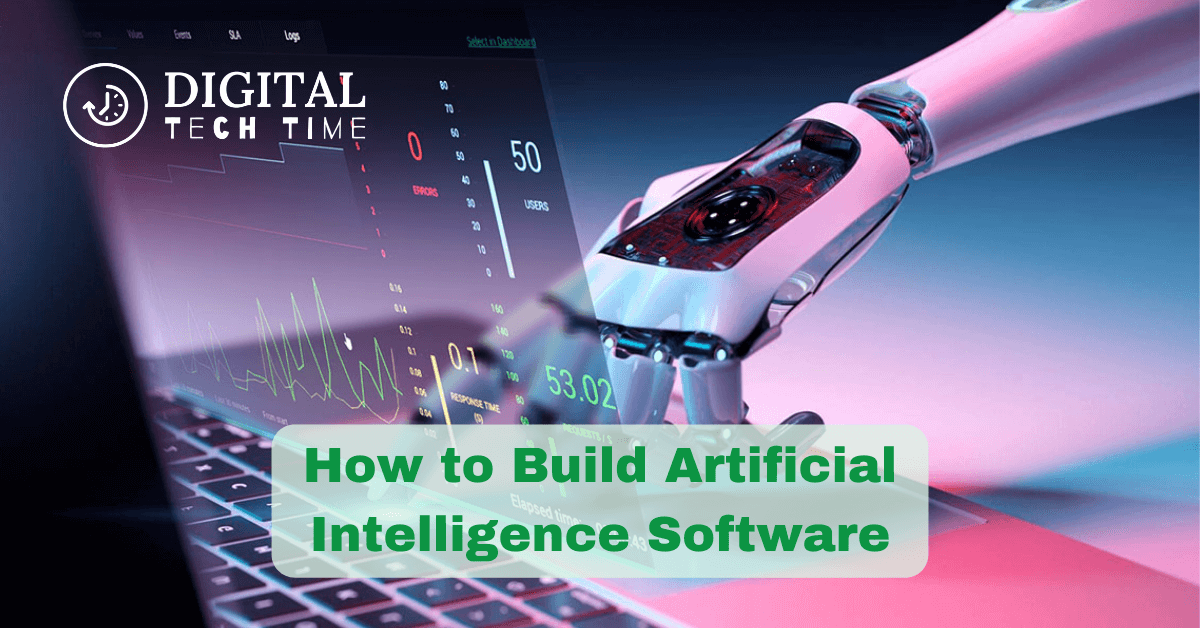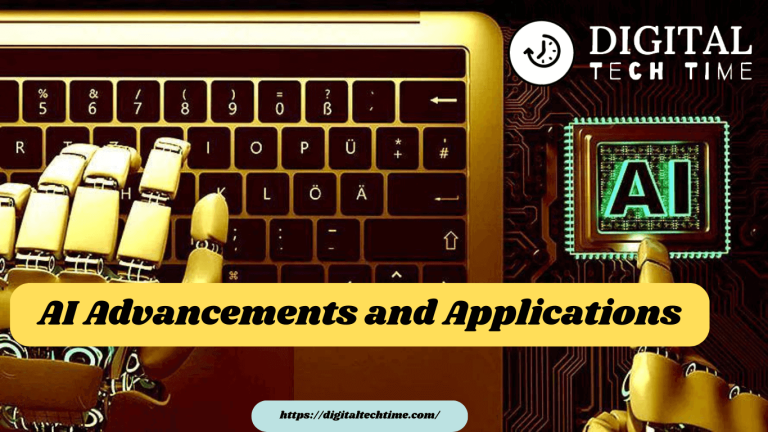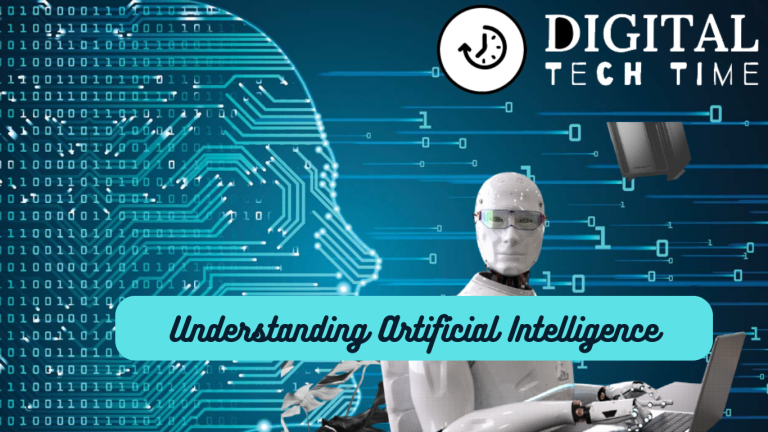How to Build Artificial Intelligence Software: A Clear Guide
Artificial Intelligence (AI) is transforming industries, from healthcare to finance, and its applications are vast. Building Artificial Intelligence Software requires a combination of the right tools, knowledge, and data. Here’s a step-by-step guide to help you navigate the process.
Understanding Artificial Intelligence
Artificial Intelligence (AI) is a branch of computer science that focuses on creating intelligent machines that can perform tasks that typically require human intelligence. AI systems are designed to learn, reason, and solve problems in a way that mimics human cognitive abilities.
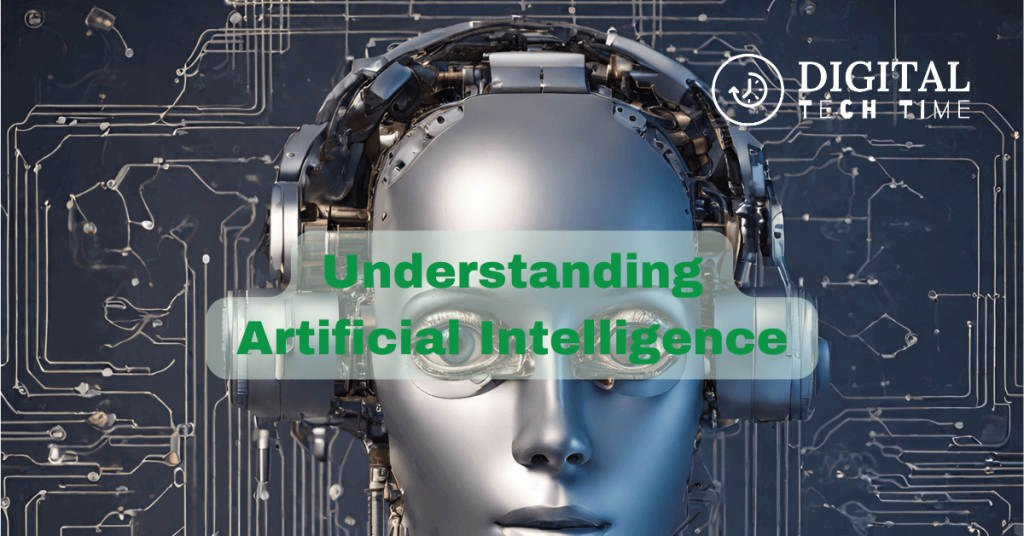
There are two main types of AI: narrow or weak AI, and general or strong AI. Narrow AI is designed to perform a specific task, such as speech recognition or image classification. General AI, on the other hand, is designed to perform any intellectual task that a human can do.
AI systems are typically built using machine learning algorithms, which enable machines to learn from data and improve their performance over time. There are several types of machine learning, including supervised learning, unsupervised learning, and reinforcement learning.
Supervised learning involves training an AI system using labelled data, which is data that has been annotated with the correct answers. The system uses this data to learn how to recognize patterns and make predictions. Unsupervised learning, on the other hand, involves training an AI system using unlabeled data, which is data that has not been annotated. The system uses this data to find patterns and make predictions on its own. Reinforcement learning involves training an AI system to make decisions based on feedback from its environment.
AI systems can be built using a variety of programming languages, including Python, Java, and C++. Python is a popular choice for building AI systems because it has a large number of libraries and tools specifically designed for machine learning and data analysis.
Overall, AI is a rapidly growing field with many exciting applications. As AI systems become more advanced, they have the potential to revolutionize many industries, including healthcare, finance, and transportation.
Types of Artificial Intelligence Software
Artificial Intelligence software can be classified into three types based on their functionality:
1. Rule-based AI
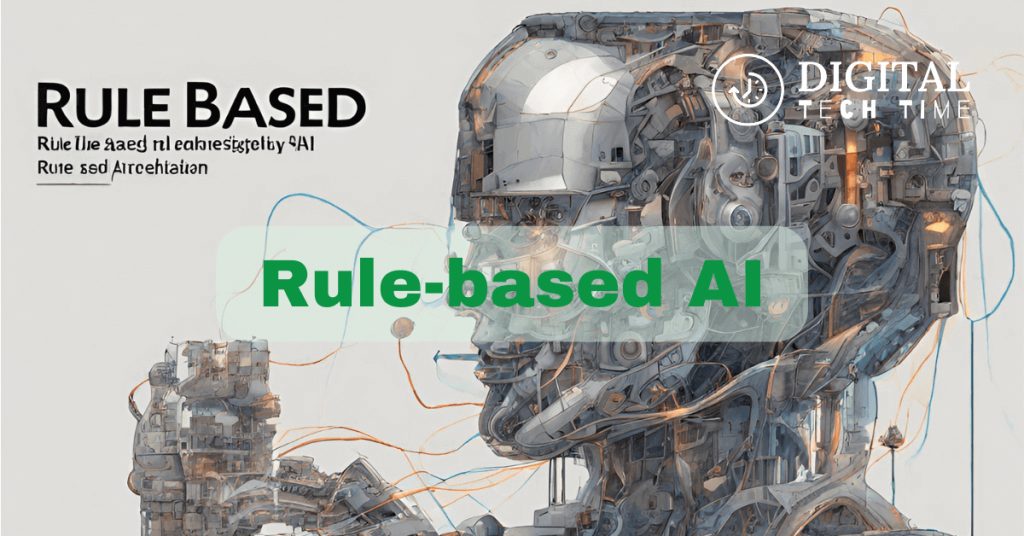
Rule-based AI, also known as Expert Systems, uses a set of rules to make decisions. These rules are based on if-then statements, which are created by human experts. The software follows these rules to make decisions and provide solutions. Rule-based AI is best suited for tasks that have clear rules and can be defined using logic.
2. Machine Learning AI
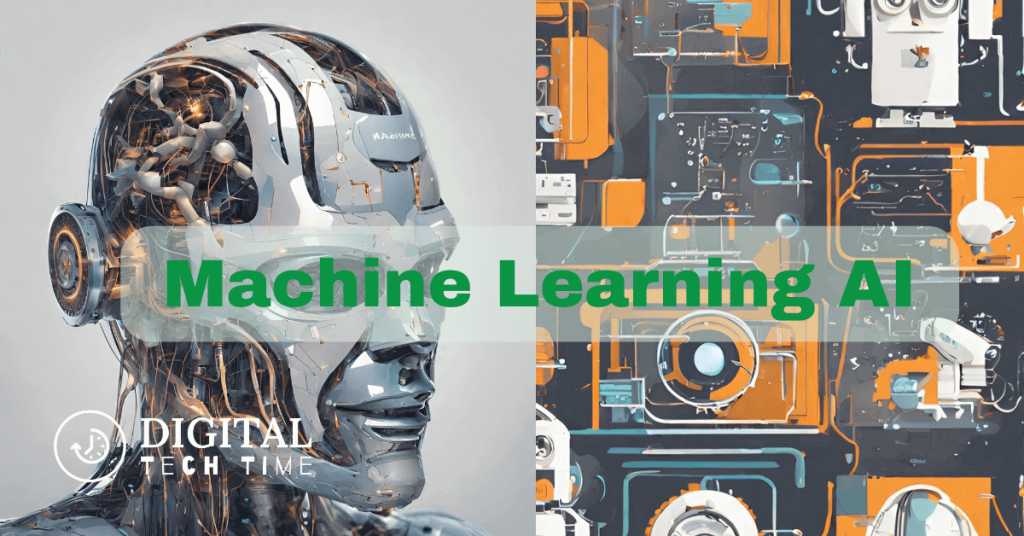
Machine Learning (ML) AI uses algorithms to learn from data and improve its accuracy over time. ML AI can be divided into three subcategories: supervised learning, unsupervised learning, and reinforcement learning. Supervised learning uses labelled data to train the model, while unsupervised learning uses unlabeled data. Reinforcement learning involves training the model to make decisions based on rewards and punishments.
3. Neural Network AI
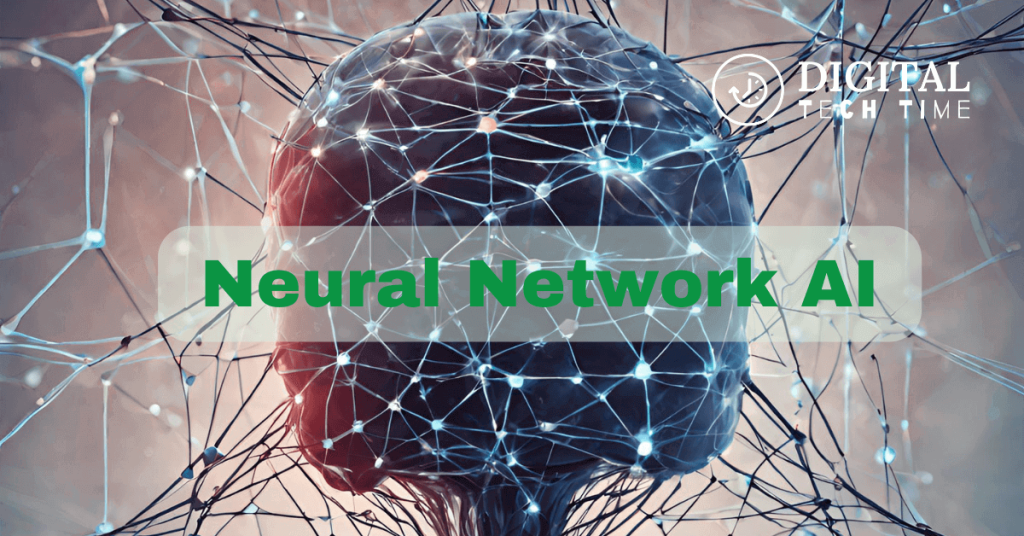
Neural Network AI, also known as Deep Learning, is a subset of Machine Learning. It is based on the structure and function of the human brain. Neural Network AI uses a network of interconnected nodes that process information in a similar way to the neurons in the human brain. This type of AI is best suited for tasks that require pattern recognition, such as image or speech recognition.
Each type of Artificial Intelligence Software has its strengths and weaknesses. Rule-based AI is best suited for tasks with clear rules, while Machine Learning AI is better suited for tasks that require learning from data. Neural Network AI is best suited for tasks that require pattern recognition. Understanding the strengths and weaknesses of each type of AI can help developers choose the right type of AI for their projects.
Pre-Requisites for Building Artificial Intelligence Software
Before diving into the development of Artificial Intelligence Software, there are some prerequisites that need to be considered. These prerequisites will help ensure that the Artificial Intelligence Software is developed in a structured and efficient manner.
Data
Data is the foundation of any AI system. Without data, the Artificial Intelligence Software cannot learn and make intelligent decisions. Therefore, it is essential to have a large and diverse dataset that is relevant to the problem that the Artificial Intelligence Software is solving. This dataset should be clean, labelled, and pre-processed before being fed into the AI system.
Algorithms
Algorithms are the building blocks of Artificial Intelligence Software. They are responsible for processing the data and making intelligent decisions. Therefore, it is essential to choose the right algorithms for the problem that the Artificial Intelligence Software is solving. There are various algorithms available, such as decision trees, neural networks, and support vector machines. Each algorithm has its strengths and weaknesses, and the choice of algorithm should be based on the problem that the Artificial Intelligence Software is solving.
Tools and Technologies
Artificial Intelligence Software development requires specialized tools and technologies. These tools and technologies are designed to make the development process more efficient and effective. Some of the commonly used tools and technologies include:
- Programming languages: Python, R, Java, and C++ are some of the popular programming languages used for Artificial Intelligence Software development.
- Frameworks: TensorFlow, Keras, and PyTorch are some of the popular frameworks used for developing Artificial Intelligence Software.
- Cloud Computing: Cloud computing platforms like Amazon Web Services (AWS), Microsoft Azure, and Google Cloud Platform provide the infrastructure required for developing and deploying Artificial Intelligence Software.
Team
Building Artificial Intelligence Software requires a team of skilled professionals. The team should consist of data scientists, machine learning engineers, software developers, and domain experts. Each member of the team brings a unique skill set to the table, and their collaboration is essential for the success of the project.
In summary, building Artificial Intelligence Software requires a large and diverse dataset, the right algorithms, specialized tools and technologies, and a skilled team of professionals. By considering these prerequisites, the development of Artificial Intelligence Software can be done in a structured and efficient manner.
Choosing the Right Programming Language
When building artificial intelligence (AI) software, choosing the right programming language is crucial. Each language has its own strengths and weaknesses, and selecting the right one can make a significant difference in the outcome of the project. In this section, we will discuss some of the most popular programming languages for AI development.
Python
Python is one of the most popular programming languages for AI development. It is known for its simplicity and ease of use, making it a great choice for beginners. Python also has a vast array of libraries and frameworks that make it easy to implement machine learning algorithms and other AI technologies. Some of the most popular libraries for AI development in Python include TensorFlow, PyTorch, Scikit-learn, and Keras.
Java
Java is another popular programming language for AI development. It is known for its speed and scalability, making it a great choice for large-scale projects. Java also has a vast ecosystem of libraries and frameworks that make it easy to implement machine learning algorithms and other AI technologies. Some of the most popular libraries for AI development in Java include Deeplearning4j, Weka, and Encog.
R
R is a programming language specifically designed for statistical computing and graphics. It is widely used in data analysis and machine learning, making it a popular choice for AI development. R has a vast array of libraries and packages that make it easy to implement machine learning algorithms and other AI technologies. Some of the most popular packages for AI development in R include caret, mlr, and randomForest.
Prolog
Prolog is a logic programming language that is often used for AI development. It is particularly well-suited for natural language processing and expert systems. Prolog is known for its ability to handle complex relationships and reasoning, making it a great choice for AI projects that require these capabilities. Some of the most popular frameworks for AI development in Prolog include SWI-Prolog and YAP.
In summary, choosing the right programming language is crucial when building Artificial Intelligence Software. Python, Java, R, and Prolog are all popular choices, each with its own strengths and weaknesses. It is important to carefully consider the requirements of the project and select the language that is best suited for the task at hand.
Understanding Machine Learning
Machine learning is a subset of artificial intelligence that uses algorithms to enable machines to learn from data and improve their performance on a specific task. There are three main types of machine learning: supervised learning, unsupervised learning, and reinforcement learning.
Supervised Learning
Supervised learning is a type of machine learning where the algorithm is trained on labelled data. The algorithm learns to map input data to output data, based on the examples it is given. The goal is to learn a general rule that can be applied to new, unseen data. Supervised learning is commonly used for tasks such as image recognition, speech recognition, and natural language processing.
Unsupervised Learning
Unsupervised learning is a type of machine learning where the algorithm is trained on unlabeled data. The algorithm learns to identify patterns and relationships in the data without any guidance. The goal is to discover hidden structures or clusters in the data. Unsupervised learning is commonly used for tasks such as anomaly detection, clustering, and dimensionality reduction.
Reinforcement Learning
Reinforcement learning is a type of machine learning where the algorithm learns through trial and error. The algorithm interacts with an environment and learns to take actions that maximize a reward signal. The goal is to learn a policy that can be used to make decisions in similar situations. Reinforcement learning is commonly used for tasks such as game playing, robotics, and autonomous driving.
In summary, machine learning is a powerful tool for building artificial intelligence software. By understanding the different types of machine learning, developers can choose the right approach for their specific task and build more accurate and efficient algorithms.
Data Processing and Management
Data is the backbone of any Artificial Intelligence Software, and it is critical to process and manage it effectively to build a successful AI model. The following are some best practices for data processing and management in Artificial Intelligence Software development.
Data Collection
The first step in building an AI model is to collect relevant data. The data should be representative of the problem you are trying to solve and should be of high quality. It is important to collect a large amount of data to ensure that the AI model is accurate and can generalize well to new data.
Data Cleaning
Data cleaning is the process of removing errors, inconsistencies, and irrelevant data from the dataset. It is important to ensure that the data is clean and consistent to avoid any biases and errors in the AI model. Data cleaning can be done using various techniques such as statistical analysis, visualization, and machine learning algorithms.
Data Preprocessing
Data preprocessing involves transforming the raw data into a format that can be easily understood by the AI model. This includes tasks such as normalization, feature scaling, and dimensionality reduction. Normalization involves scaling the data to a specific range, while feature scaling involves scaling the features to a similar range. Dimensionality reduction involves reducing the number of features in the dataset to improve the performance of the AI model.
Data Integration
Data integration involves combining data from various sources to create a unified dataset. This is important as it enables the AI model to learn from a more comprehensive dataset. Data integration can be done using various techniques such as data warehousing, data fusion, and data mining.
Data Storage
Data storage is an important aspect of data management in Artificial Intelligence Software development. The data should be stored in a secure and scalable manner to ensure that it is easily accessible and can be used by the AI model. Cloud-based storage solutions such as Amazon S3 and Google Cloud Storage are popular choices for storing data in Artificial Intelligence Software development.
In summary, effective data processing and management are essential for building a successful AI model. It involves collecting, cleaning, preprocessing, integrating, and storing data in a secure and scalable manner. By following these best practices, AI developers can ensure that their AI models are accurate, reliable, and scalable.
Building AI Algorithms
Building AI algorithms is a crucial step in creating effective artificial intelligence software. These algorithms are the backbone of AI systems, enabling machines to learn from data and make predictions or decisions based on that learning. Here are some key considerations when building AI algorithms:
Data Collection and Preprocessing
The first step in building AI algorithms is to collect and preprocess relevant data. This data should be representative of the problem the AI system is intended to solve and should be of high quality. Preprocessing may involve cleaning the data, transforming it into a suitable format, and reducing its dimensionality.
Algorithm Selection
Once the data is ready, the next step is to select an appropriate algorithm. There are many types of AI algorithms, including supervised learning, unsupervised learning, and reinforcement learning. The choice of algorithm will depend on the problem being solved and the type of data available.
Hyperparameter Tuning
After selecting an algorithm, it is important to tune its hyperparameters. Hyperparameters are settings that determine how the algorithm learns from the data. Tuning these hyperparameters can significantly improve the performance of the algorithm.
Training and Validation
Once the algorithm and its hyperparameters are selected, the next step is to train the model on the data. This involves feeding the data into the algorithm and adjusting its parameters to minimize the error between the predicted output and the actual output. It is important to validate the model during this process to ensure that it is not overfitting to the training data.
Testing and Deployment
After the model is trained and validated, it is important to test it on new data to ensure that it generalizes well. Once the model is deemed to be accurate and reliable, it can be deployed in a production environment. It is important to monitor the performance of the model in this environment and to periodically retrain it with new data to ensure that it remains accurate over time.
In summary, building effective AI algorithms requires careful consideration of data collection and preprocessing, algorithm selection, hyperparameter tuning, training and validation, and testing and deployment. By following these steps, developers can create AI systems that are accurate, reliable, and effective at solving real-world problems.
Software Testing and Debugging
Software testing and debugging are crucial steps in building artificial intelligence software. Testing ensures that the software meets its functional and non-functional requirements, while debugging identifies and fixes defects, errors, or issues in the software system.
There are several approaches to software testing, including manual testing and automated testing. Manual testing involves human testers executing test cases and verifying the software’s behaviour. Automated testing, on the other hand, involves using software tools to execute test cases and compare the actual results with the expected results.
Artificial intelligence software testing requires a different approach than traditional software testing. Artificial Intelligence Software testing involves testing the algorithms used in the software, as well as the data inputs and outputs. Additionally, Artificial Intelligence Software testing requires testing for bias and fairness in the algorithms.
Debugging is the process of identifying and fixing defects, errors, or issues in the software system. Debugging can be a challenging and time-consuming process, especially in Artificial Intelligence Software, where the algorithms can be complex and difficult to understand.
To make debugging easier, developers can use debugging tools and techniques. These tools can help developers identify the root cause of the issue and fix it quickly. Some popular debugging tools include:
- Debuggers: Debuggers allow developers to step through the code and inspect variables and data structures.
- Profilers: Profilers help developers identify performance bottlenecks in the code.
- Loggers: Loggers record information about the software’s behaviour, making it easier to identify issues.
In conclusion, software testing and debugging are critical steps in building artificial intelligence software. Artificial Intelligence Software testing requires a different approach than traditional software testing, and debugging can be a challenging process. However, with the right tools and techniques, developers can ensure that their Artificial Intelligence Software is robust, reliable, and free from defects.
Implementing Neural Networks
One of the most important components of building artificial intelligence software is implementing neural networks. Neural networks are a type of machine learning algorithm that is modelled after the structure of the human brain. They are used to recognize patterns and relationships in data and can be used for a wide range of applications, including image recognition, speech recognition, and natural language processing.
When implementing neural networks, there are several key steps to follow:
- Data preparation: Before building a neural network, it is important to prepare the data that will be used to train the network. This may involve cleaning and preprocessing the data and splitting it into training and testing sets.
- Network architecture: The architecture of the neural network is determined by the number of layers, the number of neurons in each layer, and the activation functions used in each layer. Choosing the right architecture is crucial for achieving good performance.
- Training: During the training process, the neural network is presented with input data and adjusts its weights and biases in order to minimize the difference between its output and the desired output. This process is typically repeated many times using a process called backpropagation.
- Validation and testing: Once the network has been trained, it is important to validate its performance on a separate set of data. This can help to ensure that the network is not overfitting to the training data and that it is able to generalize to new data.
Overall, implementing neural networks requires a solid understanding of machine learning concepts and algorithms, as well as the ability to work with large amounts of data and complex models. However, with the right tools and techniques, it is possible to build powerful AI systems that can help to solve a wide range of real-world problems.
Optimizing the AI Software
Optimizing Artificial Intelligence Software is a crucial step in ensuring its efficiency and accuracy. It involves fine-tuning the algorithms and models to improve their performance and reduce errors. Here are some essential tips for optimizing AI software:
Hyperparameter Tuning
Hyperparameter tuning involves adjusting the parameters of the AI model to achieve the best results. It is a crucial step in improving the accuracy of the Artificial Intelligence Software. There are various techniques for hyperparameter tuning, such as grid search, random search, and Bayesian optimization. The choice of technique depends on the complexity of the AI model and the available computing resources.
Regularization
Regularization is a technique used to prevent overfitting in AI models. It involves adding a penalty term to the loss function to discourage the model from fitting the noise in the training data. There are various types of regularization, such as L1, L2, and dropout. The choice of regularization technique depends on the complexity of the AI model and the available computing resources.
Data Augmentation
Data augmentation is a technique used to increase the size of the training data by generating new samples from the existing data. It is a crucial step in improving the accuracy of the Artificial Intelligence Software, especially when the available data is limited. There are various techniques for data augmentation, such as rotation, flipping, and cropping. The choice of data augmentation technique depends on the type of AI model and the available computing resources.
Hardware Optimization
Hardware optimization involves selecting the right hardware for running the AI software. It is a crucial step in ensuring the efficiency and scalability of the AI software. There are various types of hardware for running AI software, such as CPUs, GPUs, and TPUs. The choice of hardware depends on the complexity of the AI model and the available computing resources.
Conclusion
Optimizing AI software is a crucial step in ensuring its efficiency and accuracy. It involves fine-tuning the algorithms and models to improve their performance and reduce errors. The above tips can help developers optimize their AI software and achieve the best results.
Maintaining and Updating the Artificial Intelligence Software
Maintaining and updating Artificial Intelligence Software is crucial to ensuring the system continues to function effectively and efficiently. As AI is still a relatively new technology, updates and maintenance are essential to keep up with the latest developments in the field.
Updating the Artificial Intelligence Software involves adding new features, fixing bugs, and improving the system’s performance. It is essential to ensure that the updates do not negatively impact the system’s existing functionality. The updates should be tested thoroughly before being released to users.
One of the challenges of maintaining Artificial Intelligence Software is the need for a large amount of data to train the system. As the system is used, it will continue to learn and improve based on the data it receives. Therefore, it is crucial to ensure that the data being fed into the system is accurate and relevant.
Regular maintenance of the AI software is also necessary to ensure that it continues to function correctly. This includes checking for any hardware issues, updating software components, and monitoring the system’s performance. Regular maintenance can help prevent system failures and ensure that the Artificial Intelligence Software continues to operate smoothly.
To facilitate maintenance and updates, it is essential to have a well-designed architecture that allows for easy integration of new features and updates. The architecture should be modular and scalable, allowing for easy expansion and modification as the system evolves.
In conclusion, maintaining and updating Artificial Intelligence Software is critical to ensuring its continued effectiveness and efficiency. Regular maintenance and updates can help prevent system failures, improve performance, and ensure that the system continues to learn and evolve. A well-designed architecture can facilitate updates and maintenance, making it easier to integrate new features and ensure the system’s scalability.
Reach out more about Artificial Intelligence: Dive into the world of Artificial Intelligence. Discover AI breakthroughs, trends, and insights. Your gateway to the future of technology!
Frequently Asked Questions
What are the requirements for building an AI system?
Building an AI system requires a few essential elements. First, you need a large dataset that the AI can learn from. Second, you need an algorithm or program that can analyze the data and identify patterns. Third, you need a way to train the AI model using the data and algorithm. Fourth, you need a way to test and evaluate the accuracy of the AI model. Finally, you need a way to integrate the AI system into your software or application.
How do I create my own Artificial Intelligence Software?
Creating your own Artificial Intelligence Software requires a deep understanding of machine learning algorithms, programming languages, and data analysis. You can start by learning Python, which is a popular programming language for building AI systems. Next, you can study machine learning algorithms and data analysis techniques. Finally, you can use open-source tools like TensorFlow, Keras, or PyTorch to build your AI system.
What software is commonly used to build AI?
There are several software tools commonly used to build AI systems. TensorFlow, Keras, and PyTorch are popular open-source libraries for building machine-learning models. Other tools like IBM Watson, Microsoft Azure, and Google Cloud AI Platform provide cloud-based AI services and tools for building AI applications.
Can I build an AI on my own?
Yes, it is possible to build an AI system on your own. However, it requires a deep understanding of machine learning algorithms, programming languages, and data analysis techniques. You also need access to a large dataset that the AI can learn from. It is recommended to start with simpler AI projects and gradually build up your skills and knowledge.
How much does it cost to build an AI?
The cost of building an AI system can vary depending on several factors, such as the complexity of the project, the size of the dataset, and the tools and services used. Building a simple AI system can cost a few thousand dollars while building a more complex system can cost tens of thousands of dollars or more.
Which tools are recommended for learning AI?
There are several tools recommended for learning AI, including online courses, books, and tutorials. Some popular resources include Coursera’s Machine Learning course, Andrew Ng’s Deep Learning Specialization, and the book “Hands-On Machine Learning with Scikit-Learn, Keras, and TensorFlow”. It is also recommended to practice building AI systems using open-source tools like TensorFlow, Keras, or PyTorch.

